View Dashboard #
Log in to ZStack Cloud, and the page Dashboard is displayed by default. If you already log in, you can also be redirected to the dashboard by choosing Dashboard on the main menu of ZStack Cloud.

The ZStack Cloud dashboard displays information about the Cloud on different widgets, such as resource state statistics, resource utilization trend, resource usage statistics, resource top ranking, recent visit, account or user information, and unread alarm statistics in recent seven days.
- Whenever you log in to the dashboard or refresh this page, the dashboard will obtain and display the latest data in real time. By default, widgets in the form of charts and tables automatically refresh every 30 seconds.
- By default, the dashboard displays a number of commonly-used widgets, meeting your basic business requirements in O&M and management. If you need to customize the dashboard, click the Customize button at the upper right corner. For details about how to customize the dashboard, see chapter Customize Dashboard.
- The dashboard displays widgets in fixed sizes such as large, medium, and small. You can drag and drop widgets to arrange the dashboard layout as per your own preferences.
- The dashboard displays resource data of the current zone by default. You can also click the upper left button to switch and show the resource data of all zones.
- Charts and tables that show status are following the same colour code, according to which green stands for normal status, red indicates abnormal status, and gray means other status.
- The percentage progress bar is displayed in blue (less than 60%), yellow (greater than or equal to 60% and less than 80%), and red (greater than or equal to 80%) to present the usage of current resource in a visualized way.
- Some widgets such as Resource State Statistics, Resource Utilization Trend, and Resource Usage Statistics allow you to visit the resource list by clicking the number on the card or the arrow in the upper-right corner. This helps to improve the O&M efficiency.
Customize Dashboard #
On the Dashboard page, click Customize, and then the Custom Dashboard page is displayed.
The procedure is detailed as follows.
- Add widgets.On the Custom Dashboard page, you can click the Add Widget button in the upper-left corner, and add widgets on the dashboard based on your business needs. For details about the widgets, see Dashboard Widgets List. Note: You can add up to 30 widgets to the dashboard. The same widget can only be added once.
- Arrange the layout.The dashboard displays widgets in fixed sizes such as large, medium, and small. You can drag and drop widgets to arrange the layout of the dashboard according to your own preferences.
- Apply the customized dashboard.After you add widgets and arrange the dashboard layout, click the Save button, and apply the customized dashboard.Note: If you need to cancel the currently customized dashboard, click the Cancel button. You can also click the Reset button if you want to remain the default settings.
ZStack Cloud provides a variety of widgets to meet your requirements in different business scenarios. The details of these widgets are as follows.
| Widget | Resource Type | Monitoring Item | Description |
|---|---|---|---|
| Resource State Statistics | VM Instance | / | Collects usage statistics on the KVM VM instances in the current zone/all zones, and displays the total number of KVM VM instances as well as the number of these instances in different state (running, stopped, and other). |
| Host | / | Collects usage statistics on the number of hosts in the current zone/all zones, and displays the total number of hosts as well as the number of these hosts in different state (connected, disconnected, and other). | |
| Primary Storage | / | Collects usage statistics on the number of primary storage in the current zone/all zones, and displays the total number of primary storage as well as the number of these primary storage in different state (connected, disconnected, and other). | |
| Backup Storage | / | Collects usage statistics on the number of backup storage in the zone/all zones, and displays the total number of backup storage as well as the number of these backup storage in different state (connected, unconnected, other). | |
| pGPU | / | Collects usage statistics on the number of pGPUs in the current zone/all zones, and displays the total number of pGPUs as well as the number of these pGPUs in different state (attached, idle, and other). | |
| vGPU | / | Collects usage statistics on the number of vGPUs in the current zone/all zones, and displays the total number of vGPUs as well as the number of these vGPUs in different state (attached, idle, other). | |
| VPC vRouter | / | Collects usage statistics on the number of VPC vRouters in the current zone/all zones, and displays the total number of VPC vRouters as well as the number of these VPC vRouters in different state (running, stopped, and other). | |
| Volume | / | Collects usage statistics on the number of volumes in the current zone/all zones, and displays the total number of volumes as well as the number of these volumes in different state (attached, unattached, and other). | |
| Resource Utilization Trend | Host Usage Trend | CPU Utilization of All Hosts | Collects usage statistics on the CPU resources of all hosts in the current zone/all zones, and displays the CPU utilization of all hosts in real time in the form of dynamic graphs.CPU Utilization of All Hosts = Average Value of CPU Usage Rate of All Hosts |
| Average Memory Utilization of All Hosts | Collects usage statistics on the memory resources of all hosts in the current zone/all zones, and displays the average memory utilization in real time in the form of dynamic graphs.Average Memory Utilization of All Hosts = Average Value of Memory Usage of All Hosts | ||
| Total Host Network I/O (Out/In) | Collects usage statistics on the network throughput of all hosts in the current zone/all zones, and displays the total host network I/O (Out/In) in real time in the form of dynamic graphs.Total Host Network I/O = Sum of all Hosts Network I/OAllows you to specify network types to view I/O monitoring data. | ||
| Total Host Disk I/O (Read/Write) | Collects usage statistics on the disk I/O of all hosts in the current zone/all zones, and displays the total host disk I/O (read/write) in real time in the form of dynamic graphs.Total Host Disk I/O = Sum of All Hosts Disk I/O | ||
| Primary Storage Usage Trend | Primary Storage Utilization | Collects usage statistics on the primary storage in the current zone/all zones, and displays the primary storage utilization in real time in the form of dynamic graphs.Primary Storage Utilization = Sum of All Primary Storage Capacity Used / Sum of All Primary Storage Capacity | |
| Backup Storage Usage Trend | Backup Storage Utilization | Collects usage statistics on the backup storage in the current zone/all zones, and displays the backup storage utilization in real time in the form of dynamic graph.Backup Storage Utilization = Sum of the All Backup Storage Capacity Used / Sum of All Backup Storage Capacity | |
| Resource Usage Statistics | CPU | Allocation Rate | Collects usage statistics on the CPU in the current zone/all zones, and displays the CPU allocation rate, as well as used CPU and total CPU. |
| Memory | Allocation Rate | Collects usage statistics on the memory in the current zone/all zones, and displays the memory allocation rate, as well as used memory and total memory. | |
| Primary Storage | Actual Utilization | Collects statistics on the actual utilization of the primary storage in the current zone/all zones, and displays the actual utilization of primary storage, as well as used primary storage and total primary storage. | |
| Allocation Rate | Collects usage statistics on the primary storage in the current zone/all zones, and displays the allocation rate of the primary storage, as well as the used primary storage and total primary storage. | ||
| Backup Storage | Utilization | Collects usage statistics on the backup storage in the current zone/all zones, and displays the backup storage utilization, as well as used backup storage and total backup storage. | |
| Public Network | IPv4 | Collects usage statistics on the IP addresses of IPv4 public networks in the current zone/all zones, and displays the IP address utilization, as well as the used and total IP addresses. | |
| IPv6 | Collects usage statistics on the IP addresses of IPv6 public networks in the current zone/all zones, and displays the IP address utilization, as well as the used and total IP addresses. | ||
| Flat Network | IPv4 | Collects usage statistics on the IP addresses of IPv4 flat networks in the current zone/all zones, and displays the IP address utilization, as well as the used and total IP addresses. | |
| IPv6 | Collects usage statistics on the IP addresses of IPv6 flat networks in the current zone/all zones, and displays the IP address utilization, as well as the used and total IP addresses. | ||
| Resource Top Ranking | VM (External Monitor) | CPU Utilization | Collects usage statistics on the CPU of VM instances in the current zone/all zones via external monitoring, and displays top 3 or top 10 of VM instances based on the CPU utilization. |
| Memory Utilization | Collects usage statistics on the memory usage of VM instances in the current zone/all zones via external monitoring, and displays top 3 or top 10 of VM instances based on the memory utilization. | ||
| Disk Read IOPS | Collects usage statistics on the disk read IOPS of VM instances in the current zone/all zones via external monitoring, and displays top 3 or top 10 of VM instances based on the disk read IOPS.Disk Read IOPS = Sum of all Disk Read IOPS of VM Instances | ||
| Disk Write IOPS | Collects usage statistics on the disk write IOPS of VM instances in the current zone/all zones via external monitoring, and displays top 3 or top 10 of VM instances based on the disk write IOPS.Disk Write IOPS = Sum of All Disk Write IOPS of VM Instances | ||
| VM (Internal Monitor) | CPU Utilization | Collects usage statistics on the CPU of VM instances in the current zone/all zones via internal monitoring, and displays top 3 or top 10 of VM instances based on the CPU utilization.Note: You need to install an agent on the VM instance to obtain internal monitoring data. | |
| Memory Utilization | Collects usage statistics on the memory of VM instances in the current zone/all zones via internal monitoring, and displays top 3 or top 10 of VM instances based on the memory utilization.Note: You need to install an agent on the VM instance to obtain internal monitoring data. | ||
| Disk Utilization | Collects usage statistics on the disk of VM instances in the current zone/all zones via internal monitoring, and displays top 3 or top 10 of VM instances based on the disk utilization.Disk Utilization = Sum of All VM instances Disk Capacity Used / Sum of All VM instances Disk Capacity | ||
| VPC vRouter (External Monitor) | CPU Utilization | Collects usage statistics on the CPU of VPC vRouters in the current zone/all zones via external monitoring, and displays top 3 or top 10 of VPC vRouters based on the CPU utilization.VM Instances CPU Utilization = Sum of Each CPU Utilization /Number of CPU Cores | |
| Memory Utilization | Collects usage statistics on the memory of VPC vRouters in the current zone/all zones via external monitoring, and displays top 3 or top 10 of VPC vRouters based on the memory utilization. | ||
| Disk Read IOPS | Collects usage statistics on the disk read IOPS of VPC vRouters in the current zone/all zones via external monitoring, and displays top 3 or top 10 of VPC vRouters based on the disk read IOPS.Disk Read IOPS = Sum of All Disk Read IOPS of VPC vRouters | ||
| Disk Write IOPS | Collects usage statistics on the disk write IOPS of VPC vRouters in the current zone/all zones via external monitoring, and displays top 3 or top 10 of VPC vRouters based on the disk write IOPS.Disk Write IOPS = Sum of All Disk Write IOPS of VPC vRouters | ||
| VPC vRouter (Internal Monitor) | CPU Utilization | Collects usage statistics on the CPU of VPC vRouters in the current zone/all zones via internal monitoring, and displays top 3 or top 10 of VPC vRouters based on the CPU utilization. | |
| Memory Utilization | Collects usage statistics on the memory of VPC vRouters in the current zone/all zones via internal monitoring, and displays top 3 or top 10 of VPC vRouters based on the memory utilization. | ||
| Disk Utilization | Collects usage statistics on the disk of VPC vRouters in the current zone/all zones via internal monitoring, and displays top 3 or top 10 of VPC vRouters based on the disk utilization.Disk Utilization = Sum of All Used Disks Capacity on VPC vRouters / Sum of All Disks Capacity on VPC vRouters | ||
| Host | CPU Utilization | Collects usage statistics on the CPU of hosts in the current zone/all zones, and displays top 3 or top 10 of hosts based on the CPU utilization.Host CPU Utilization = Sum of Each CPU Usage Rate / Number of CPU Cores | |
| Memory Utilization | Collects usage statistics on the memory of hosts in the current zone/all zones, and displays top 3 or top 10 of hosts based on the memory utilization. | ||
| Disk Read IOPS | Collects usage statistics on the disk read IOPS of hosts in the current zone/all zones, and displays top 3 or top 10 of hosts based on the disk read IOPS.Disk Read IOPS = Sum of All Disk Read IOPS of Hosts | ||
| Disk Write IOPS | Collects usage statistics on the disk write IOPS of hosts in the current zone/all zones, and displays top 3 or top 10 of hosts based on the disk write IOPS.Disk Write IOPS = Sum of All Disk Write IOPS of Hosts | ||
| Volume | Actual Size | Obtains the actual size of volumes in the current zone/all zones, and displays top 3 or top 10 of volumes based on the actual size. | |
| Snapshot | Capacity | Obtains the capacity of snapshots in the current zone/all zones, and displays top 3 or top 10 of snapshots based on the capacity. | |
| L3 Network | Available IP Percent | Collects statistics on the available IP addresses of L3 networks (public network, flat network, and VPC network) in the current zone/all zones, and displays top 3 or top 10 of the L3 networks based on the IP address availability. | |
| VIP | Outbound Traffic | Collects statistics on the outbound traffic of VIPs in the current zone/all zones, and displays top 3 or top 10 of VIPs based on the outbound traffic. | |
| Inbound Traffic | Collects statistics on the inbound traffic of VIPs in the current zone/all zones, and displays top 3 or top 10 of VIPs based on the inbound traffic. | ||
| Recent Visit | / | / | Displays 6 records showing the most visited menu bars. You can click the button Clear Record in the upper-right corner of this widget to clear all the records. |
| Account or User Information | / | / | Displays account or user information, and the Cloud platform time. |
| Unread Alarm Statistics in Recent Seven Days | / | / | Displays the latest 4 alarm messages in the recent seven days. You can click the button in the upper-right corner of this widget and go to the alarm message page for all messages. You can also click alarm statistics and warning types to view more details. |



